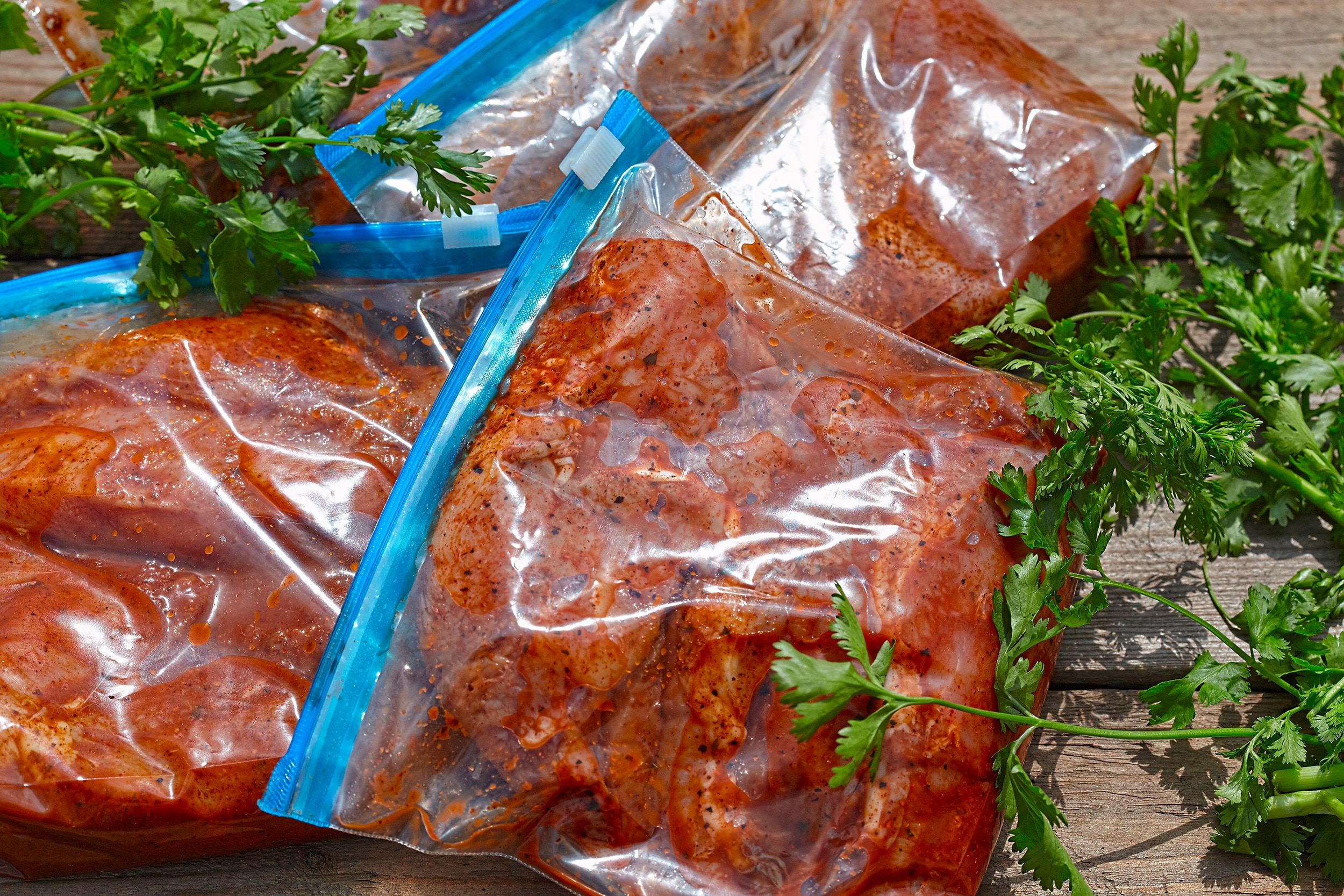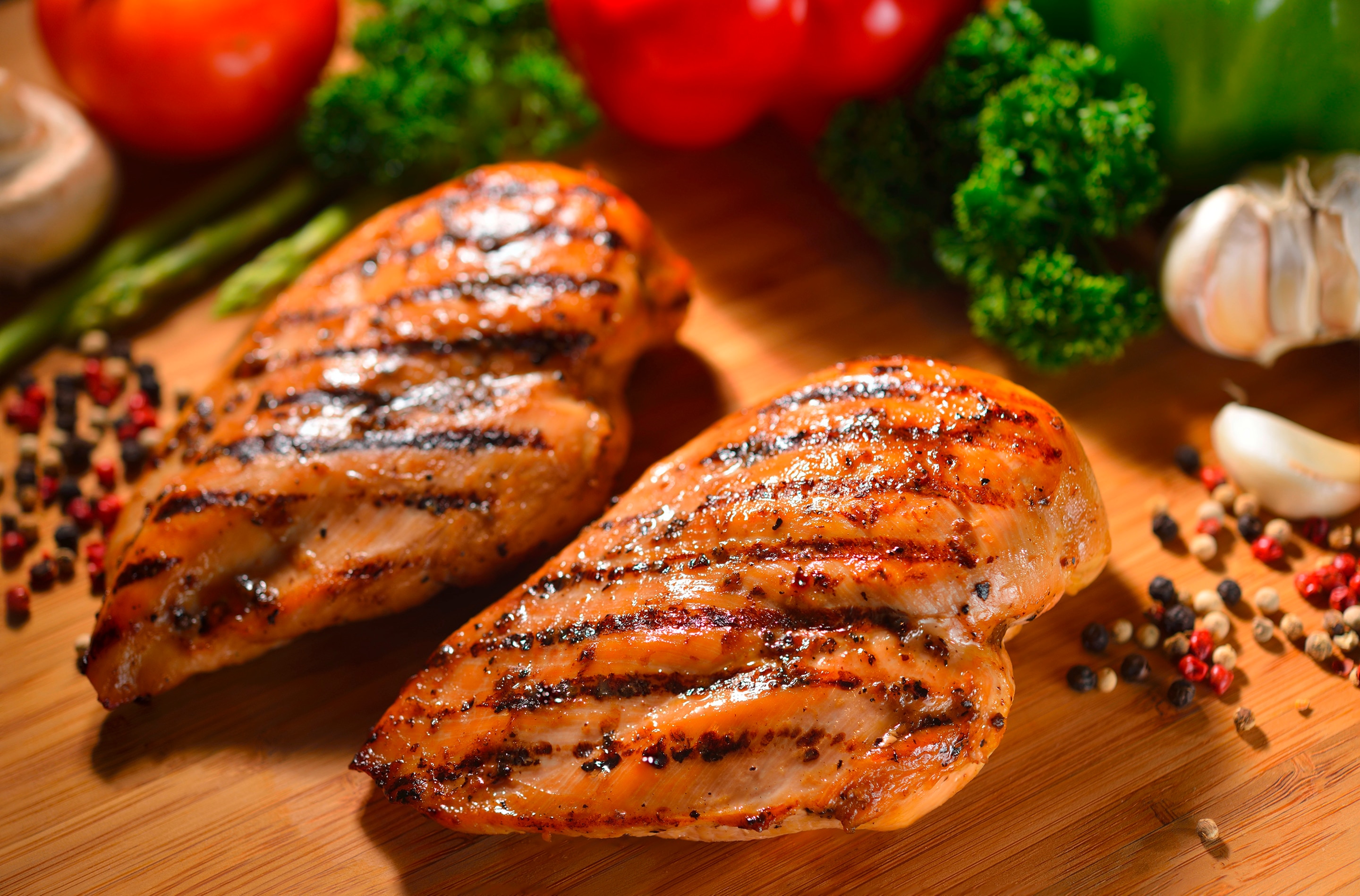Skip to:
Chicken breast has a rep for being a tricky protein. It dries out fast, gets tough and chewy when overcooked, and offers little flavor on its own. When diners request chicken parts in restaurants, chicken breast is rarely the first pick – or considered primarily for dietary reasons. But don’t let its finickiness stop you from using it in the kitchen! When you cook chicken breast correctly, it can surprise you with juicy, mouth-watering goodness.
Here are eight ways to keep this healthy protein moist and tender – from kitchen prep to serving.

Marinate
This one is a no-brainer! A marinade adds both moisture and intense flavor to chicken breast. The longer you marinate, the better. Seal the chicken in your marinade for two to three hours minimum. However, overnight is ideal. It allows the chicken enough time to absorb the flavor and moisture without losing any liquid content or tenderness during cooking.
To make a good marinade, use a blend of aromatic spices and your liquid flavorings of choice. There’s no shortage of recipes to choose from! Some of our favorite seasonings include soy sauce, lime, rosemary, Knorr Chicken Cubes, buttermilk, and yogurt.
Brine
Like a marinade, a brine helps chicken breast soak up as much moisture as possible before cooking. It only requires three ingredients: water, salt, and a pinch of sugar. This simple mixture keeps the meat tender and perfectly salted, especially if you want to prep chicken for several recipes without committing to one flavor.
Brining is especially great for frying chicken. It gives you crispier skin while keeping the meat juicy on the inside. Make your brine by dissolving salt and sugar in water before adding the chicken. Make sure to use lukewarm water. Brine your chicken for a minimum of 15 minutes or up to a few hours before cooking.
Tenderize
This simple tip applies to all kinds of meat but works best with chicken breast. Pounding helps tenderize the meat by breaking down its tough fibers. It also thins it out for more even cooking. Do this before frying, grilling, or roasting for better retention of moisture content.
To tenderize chicken breast, place the meat on a durable, flat surface. Cover it with saran wrap on top to prevent the chicken from slipping. Then, use a meat mallet and pound the meat down to ¼ inch thickness. If you don’t have a mallet, you can use another heavy object, such as a rolling pin, skillet, or even the bottom of a wine bottle. Be careful not to break it!
Thaw to Room Temperature
Is this obvious? Properly thawing meat is one step many people forget to do in advance. Defrost chicken breast down to room temperature. It helps the meat cook through properly and evenly. With frozen meats, in particular, the innermost parts of the meat tend to thaw out last – resulting in a dry, overcooked exterior and a cold, raw interior. So, always take chicken breast out of the freezer ahead of time and mind the temperature before you start.
Baste
You often use basting when cooking steak. It’s a basic technique—simply use your spoon or spatula to pick up hot oil or butter from the pan, then pour it over the meat as it cooks. This helps distribute the fat and juices, keeps moisture intact as the meat cooks, enhances flavor, and results in a more even cook.
Weigh Down
Are you cooking chicken breast over a grill? Ensure crispier skin, mouth-watering grill marks, and juicier cuts by weighing down the meat with a brick. It might sound silly off the bat, but it’s a common technique in Italian cooking. The added weight keeps the chicken breast flat against the grill for even cooking without pushing out any of its juices. It covers the meat just enough to prevent moisture from evaporating. To do this, wrap the underside of a brick, cast-iron pan, or any other weighted object in foil before applying.

Sear and Bake
For chicken breast that’s crispy on the outside and juicy on the inside, employ the sear-and-bake method. Brown the outside of the meat on a pan then finish it off in the oven. Heat some oil on medium-high heat. Make sure your chicken breast is well-seasoned before adding it to the pan. Cook each side evenly until brown. Once done, bake the chicken breast in a pre-heated oven until juices run clear. The crispy skin from the sear will help keep juices intact while baking cooks the insides through without drying them out.
Rest
Lastly, let the meat rest before serving! Cover the chicken breast in foil to hold in moisture and let it rest for at least five minutes. The resting time allows the juices to distribute themselves throughout the meat, making it easier to slice later. What you get is perfectly cooked cuts with no dry pieces in sight.
In a nutshell: prep well, cook with care, and rest before serving. With these tips and tricks, you’re sure to end up with tender, juicy chicken breasts no matter what.

